Grow Yacon at Home: Unlock the secrets to cultivating this intriguing superfood right in your backyard! Have you ever dreamt of harvesting your own naturally sweet, low-calorie tubers? Well, dream no more! This DIY guide is your passport to successfully growing yacon, a plant with a fascinating history and incredible health benefits.
Yacon, also known as the Peruvian ground apple, has been cultivated in the Andes Mountains for centuries. Indigenous communities have long valued it for its sweet, crisp tubers and medicinal properties. Now, you can bring this ancient tradition to your own garden.
Why should you bother with this DIY project? Because growing your own yacon offers a multitude of advantages! Imagine having a readily available source of prebiotics, which are fantastic for gut health, right outside your door. Plus, store-bought yacon can be expensive and difficult to find. With our simple, step-by-step instructions, you’ll be amazed at how easy it is to grow yacon at home and enjoy its delicious, health-boosting benefits. I’m excited to share these tips and tricks with you, so let’s get started!
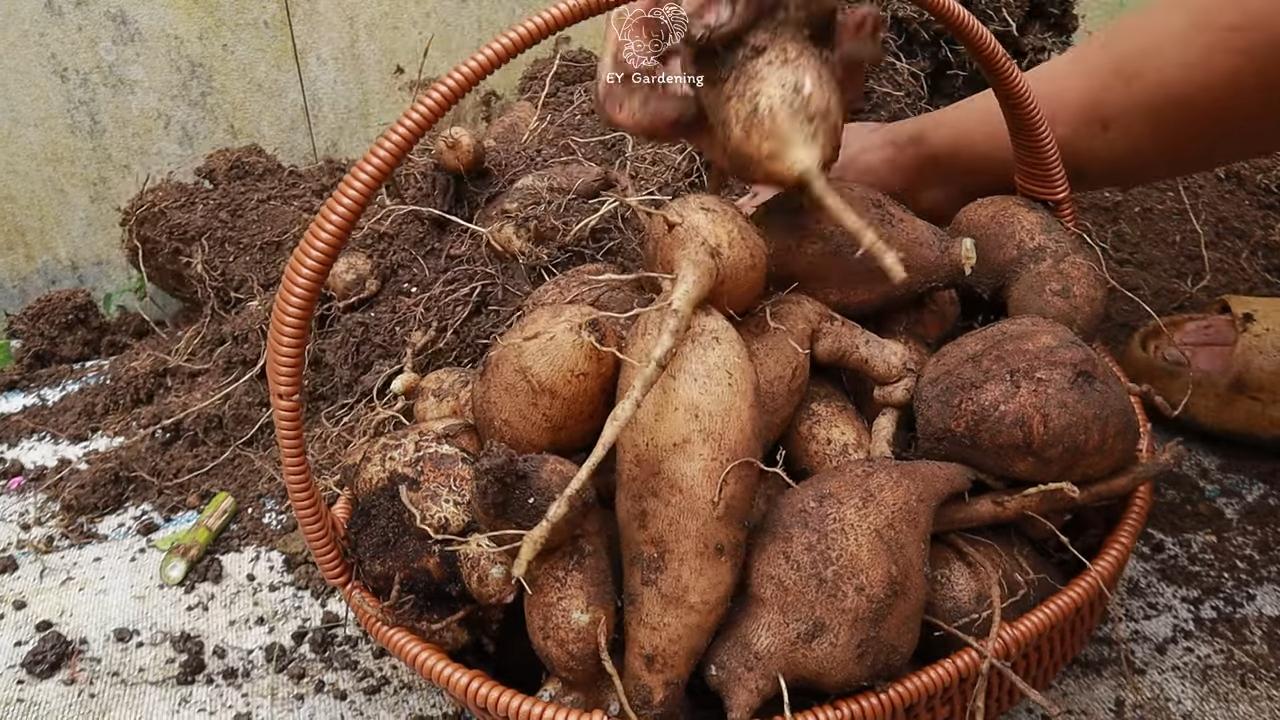
Growing Yacon at Home: A Comprehensive DIY Guide
Hey there, fellow gardening enthusiasts! Ever heard of yacon? It’s this amazing South American root vegetable that tastes a bit like a pear and has a naturally sweet flavor. Plus, it’s packed with prebiotics, which are great for your gut health. I’ve been growing yacon in my backyard for a few years now, and I’m excited to share my secrets with you so you can enjoy this delicious and healthy treat too!
What is Yacon and Why Grow It?
Yacon (Smallanthus sonchifolius) is a perennial plant that produces edible tubers and leaves. The tubers are the star of the show, offering a crisp, juicy texture and a subtly sweet taste. Unlike many other sweet vegetables, the sweetness in yacon comes from fructooligosaccharides (FOS), which are not readily absorbed by the body, making it a great option for those watching their sugar intake.
Why should you grow yacon?
* Delicious and Healthy: The tubers are a tasty and healthy alternative to other sweeteners.
* Easy to Grow: Yacon is relatively low-maintenance and can thrive in various climates.
* Unique Crop: Impress your friends and family with this unusual and rewarding vegetable.
* Beautiful Plant: The plant itself is quite attractive, with large, green leaves and small, daisy-like flowers.
Getting Started: What You’ll Need
Before we dive into the planting process, let’s gather all the necessary materials. Trust me, having everything ready beforehand will make the whole experience much smoother.
Materials:
* Yacon Crowns or Rhizomes: This is the most important part! You can usually find these at local nurseries or online seed suppliers. Make sure they look healthy and firm.
* Well-Draining Soil: Yacon prefers soil that’s rich in organic matter and drains well.
* Compost or Aged Manure: This will help improve the soil’s fertility and drainage.
* Gardening Gloves: Protect your hands from dirt and potential irritants.
* Shovel or Garden Fork: For digging holes and amending the soil.
* Watering Can or Hose: To keep your yacon plants hydrated.
* Mulch (optional): To help retain moisture and suppress weeds.
* Stakes or Trellis (optional): For supporting the tall yacon plants.
Step-by-Step Planting Guide
Alright, let’s get our hands dirty! Here’s a detailed guide on how to plant yacon successfully:
1. Choosing the Right Location
Yacon loves sunshine! Select a spot in your garden that receives at least 6-8 hours of direct sunlight per day. The soil should be well-draining and fertile. Avoid areas that tend to get waterlogged, as this can lead to root rot.
2. Preparing the Soil
This is a crucial step for healthy yacon growth.
1. Clear the Area: Remove any weeds, rocks, or debris from the planting area.
2. Loosen the Soil: Use a shovel or garden fork to loosen the soil to a depth of at least 12 inches. This will allow the yacon roots to penetrate easily.
3. Amend the Soil: Mix in plenty of compost or aged manure to improve the soil’s fertility and drainage. Aim for a ratio of about 1 part compost to 2 parts soil.
4. Level the Surface: Rake the soil to create a smooth and even surface.
3. Planting the Yacon Crowns or Rhizomes
Now for the exciting part!
1. Timing is Key: Plant yacon crowns or rhizomes in the spring, after the last frost. This will give them plenty of time to establish themselves before the growing season.
2. Dig the Holes: Dig holes that are about 4-6 inches deep and 12-18 inches apart.
3. Plant the Crowns: Place the yacon crowns or rhizomes in the holes, with the buds (or “eyes”) facing upwards.
4. Cover with Soil: Gently cover the crowns with soil and pat it down lightly.
5. Water Thoroughly: Water the newly planted yacon crowns thoroughly to help settle the soil and encourage root growth.
4. Watering and Fertilizing
Yacon needs consistent moisture, especially during the growing season.
1. Water Regularly: Water your yacon plants deeply whenever the top inch of soil feels dry to the touch. Avoid overwatering, as this can lead to root rot.
2. Fertilize Sparingly: Yacon doesn’t need a lot of fertilizer. You can apply a balanced organic fertilizer (like a 10-10-10) once or twice during the growing season, following the instructions on the fertilizer package. I prefer using compost tea every few weeks for a gentle boost.
5. Mulching (Optional but Recommended)
Mulching is a great way to conserve moisture, suppress weeds, and regulate soil temperature.
1. Apply Mulch: Spread a layer of organic mulch (such as straw, wood chips, or shredded leaves) around the base of your yacon plants.
2. Keep Mulch Away from Stems: Make sure the mulch doesn’t touch the stems of the plants, as this can promote rot.
6. Staking or Trellising (Optional)
Yacon plants can grow quite tall (up to 6-7 feet!), so staking or trellising can help prevent them from falling over.
1. Install Stakes or Trellis: Insert stakes or a trellis near your yacon plants when they are young.
2. Tie Up the Stems: As the plants grow, gently tie the stems to the stakes or trellis using soft twine or plant ties.
Caring for Your Yacon Plants
Once your yacon plants are established, they’re relatively low-maintenance. However, there are a few things you can do to ensure a bountiful harvest.
1. Weed Control
Keep the area around your yacon plants free of weeds. Weeds compete with the yacon for nutrients and water, and they can also harbor pests and diseases. Hand-pull weeds regularly or use a hoe to cultivate the soil.
2. Pest and Disease Management
Yacon is generally resistant to pests and diseases, but it’s still a good idea to keep an eye out for any problems.
* Common Pests: Slugs and snails can sometimes be a problem. You can use slug bait or hand-pick them off the plants.
* Common Diseases: Root rot can occur in poorly drained soil. Make sure your soil is well-draining and avoid overwatering.
3. Pruning (Optional)
Some gardeners prune their yacon plants to encourage tuber development. You can remove some of the lower leaves to improve air circulation and sunlight penetration. However, pruning is not essential.
Harvesting Your Yacon Tubers
This is the moment we’ve all been waiting for! Harvesting yacon is a rewarding experience.
1. Timing is Everything
Harvest yacon tubers in the late fall, after the first frost. The frost will kill the above-ground foliage, signaling that the tubers are ready to be harvested.
2. Digging Up the Tubers
1. Cut Back the Foliage: Cut back the dead foliage to about 6 inches above the ground.
2. Loosen the Soil: Use a shovel or garden fork to loosen the soil around the base of the plant.
3. Carefully Lift the Tubers: Gently lift the plant out of the ground, being careful not to damage the tubers.
4. Separate the Tubers: Separate the tubers from the crown (the part of the plant that was originally planted). The crown can be replanted next spring to grow more yacon.
3. Curing the Tubers
Curing the tubers is essential for developing their sweetness.
1. Wash the Tubers: Wash the tubers gently to remove any dirt.
2. Dry the Tubers: Dry the tubers thoroughly with a clean cloth.
3. Cure in a Warm Place: Place the tubers in a warm, dry, and well-ventilated place for 1-2 weeks. This will allow the starches in the tubers to convert to sugars, making them sweeter. I usually put them in a cardboard box in my garage.
4. Storing the Tubers
After curing, you can store the tubers in a cool, dark, and dry place for several months.
1. Wrap Individually: Wrap each tuber individually in newspaper or paper towels to prevent them from drying out.
2. Store in a Cool Place: Store the wrapped tubers in a cardboard box or mesh bag in a cool, dark, and dry place, such as a root cellar or basement.
Enjoying Your Yacon Harvest
Now that
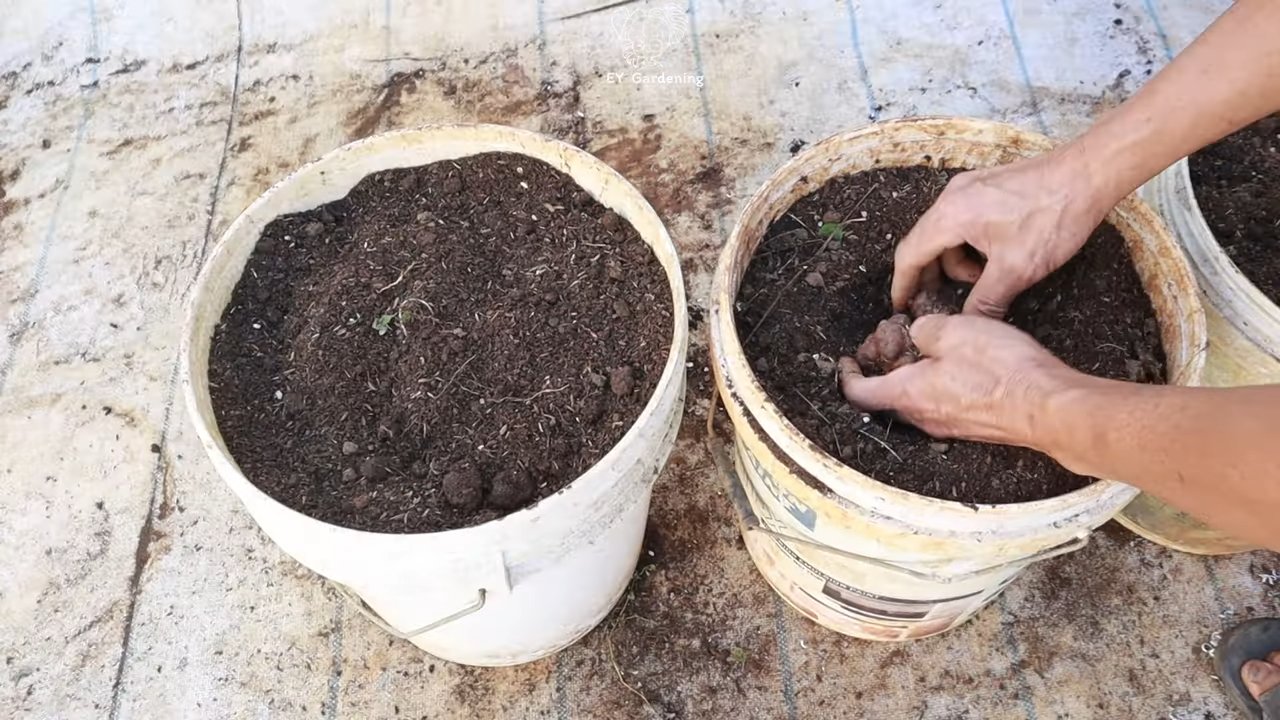
Conclusion
Growing yacon at home is more than just a gardening project; it’s an investment in your health, your garden’s biodiversity, and your culinary creativity. This unique plant, with its crisp, sweet tubers and versatile leaves, offers a rewarding experience from planting to harvest. Forget relying solely on specialty stores or farmers’ markets – taking control of your yacon supply allows you to enjoy its benefits fresh, organic, and readily available.
The beauty of this DIY project lies in its adaptability. Whether you have a sprawling backyard or a small urban garden, yacon can thrive with the right care and attention. We’ve explored the essential steps, from selecting the right variety and preparing the soil to nurturing the plants and harvesting the delicious tubers. Remember, patience is key. Yacon requires a full growing season to reach its full potential, but the wait is well worth it.
Why is growing yacon at home a must-try? Because it empowers you to cultivate a healthy and sustainable food source right in your own backyard. You’ll have access to fresh, nutrient-rich tubers that are naturally low in calories and high in prebiotics, promoting gut health and overall well-being. Plus, the yacon plant itself is a beautiful addition to any garden, with its lush foliage and vibrant flowers.
Variations and Suggestions
Don’t be afraid to experiment with different growing techniques. Try companion planting with herbs like mint or basil to deter pests and enhance the flavor of your yacon. Consider using raised beds or containers if you have poor soil quality or limited space. And when it comes to harvesting, don’t discard the leaves! Yacon leaves can be used to make a delicious and healthy tea, adding another layer of value to your homegrown crop. You can also experiment with different yacon varieties to find the one that best suits your taste and climate. Some varieties are sweeter, while others are more productive.
Furthermore, explore different ways to incorporate yacon into your diet. While the tubers are delicious raw, they can also be baked, roasted, or added to salads and smoothies. The possibilities are endless! You can even try making yacon syrup, a natural sweetener with a low glycemic index.
We encourage you to embark on this rewarding journey of growing yacon at home. It’s a chance to connect with nature, learn new skills, and enjoy the fruits (or rather, tubers) of your labor. Share your experiences with us! We’d love to hear about your successes, challenges, and creative ways of using your homegrown yacon. Post photos of your yacon plants, share your favorite recipes, and let us know what you’ve learned along the way. Together, we can build a community of yacon enthusiasts and spread the word about this amazing plant. So, grab your gardening gloves, prepare your soil, and get ready to experience the joy of growing yacon at home!
FAQ
What are the ideal growing conditions for yacon?
Yacon thrives in full sun, requiring at least 6-8 hours of direct sunlight per day. The soil should be well-draining and rich in organic matter. Yacon prefers a slightly acidic to neutral soil pH (around 6.0 to 7.0). Consistent moisture is crucial, especially during the growing season. While yacon is relatively drought-tolerant once established, regular watering will promote optimal tuber development. Protect young plants from frost, as they are sensitive to cold temperatures. In colder climates, consider starting yacon indoors and transplanting it outdoors after the last frost.
How long does it take to grow yacon from planting to harvest?
Yacon typically takes 6-7 months from planting to harvest. You’ll usually plant in the spring after the last frost and harvest in the late fall or early winter, after the foliage has died back. The exact timing will depend on your climate and the specific yacon variety you’re growing. Be patient, as yacon needs a full growing season to develop its sweet, crisp tubers.
Can I grow yacon in containers?
Yes, you can successfully grow yacon in containers, especially if you have limited garden space. Choose a large container, at least 20 gallons in size, to accommodate the plant’s root system. Ensure the container has drainage holes to prevent waterlogging. Use a high-quality potting mix that is well-draining and rich in organic matter. Water regularly and fertilize every few weeks with a balanced fertilizer. Container-grown yacon may require more frequent watering than plants grown in the ground.
How do I harvest yacon tubers?
Harvest yacon tubers in the late fall or early winter, after the foliage has died back. Gently dig around the base of the plant, being careful not to damage the tubers. Lift the entire plant out of the ground and carefully separate the tubers from the crown. The tubers will be attached to the crown by thin stems. After harvesting, cure the tubers in a cool, dark, and well-ventilated place for a week or two to allow their sweetness to develop.
How do I store yacon tubers after harvesting?
After curing, store yacon tubers in a cool, dark, and humid place, such as a root cellar or a refrigerator. Wrap the tubers in newspaper or store them in perforated plastic bags to prevent them from drying out. Properly stored yacon tubers can last for several months. Check the tubers periodically for signs of spoilage, such as soft spots or mold.
Are yacon leaves edible?
Yes, yacon leaves are edible and can be used to make a healthy and refreshing tea. Harvest young, tender leaves and dry them in a well-ventilated place. Steep the dried leaves in hot water for a few minutes to make yacon tea. Yacon leaves are also rich in antioxidants and may have other health benefits.
What are the health benefits of yacon?
Yacon is a low-calorie food that is rich in prebiotics, which are beneficial for gut health. Prebiotics promote the growth of beneficial bacteria in the gut, which can improve digestion, boost the immune system, and reduce inflammation. Yacon also contains antioxidants, which protect the body against damage from free radicals. Some studies have suggested that yacon may help regulate blood sugar levels and improve insulin sensitivity.
Are there any pests or diseases that affect yacon?
Yacon is generally resistant to pests and diseases, but it can be susceptible to certain problems, such as slugs, snails, and aphids. Protect young plants from slugs and snails by using barriers or baits. Control aphids with insecticidal soap or neem oil. In rare cases, yacon may be affected by fungal diseases, such as powdery mildew. Prevent fungal diseases by providing good air circulation and avoiding overhead watering.
Can I grow yacon from seed?
While it’s possible to grow yacon from seed, it’s not the most common or reliable method. Yacon seeds often have low germination rates, and the resulting plants may not be true to type. The most common and reliable method of propagating yacon is by dividing the crown, which is the part of the plant that connects the tubers to the stems.
Where can I find yacon plants or tubers to purchase?
You can find yacon plants or tubers at local nurseries, garden centers, or online retailers that specialize in unusual or exotic plants. Look for reputable suppliers that offer healthy, disease-free plants or tubers. When purchasing tubers, choose firm, unblemished tubers that show no signs of sprouting.

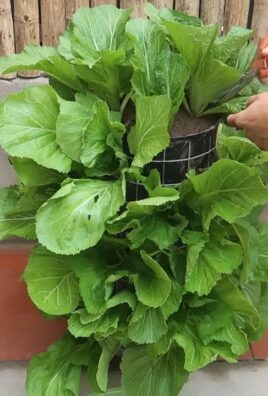
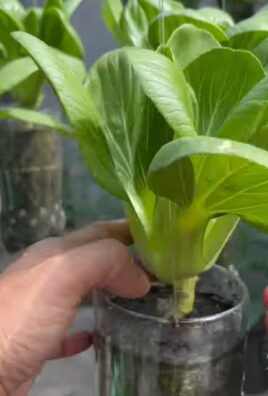
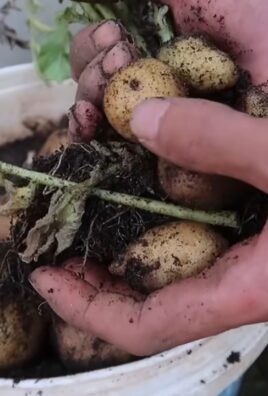
Leave a Comment